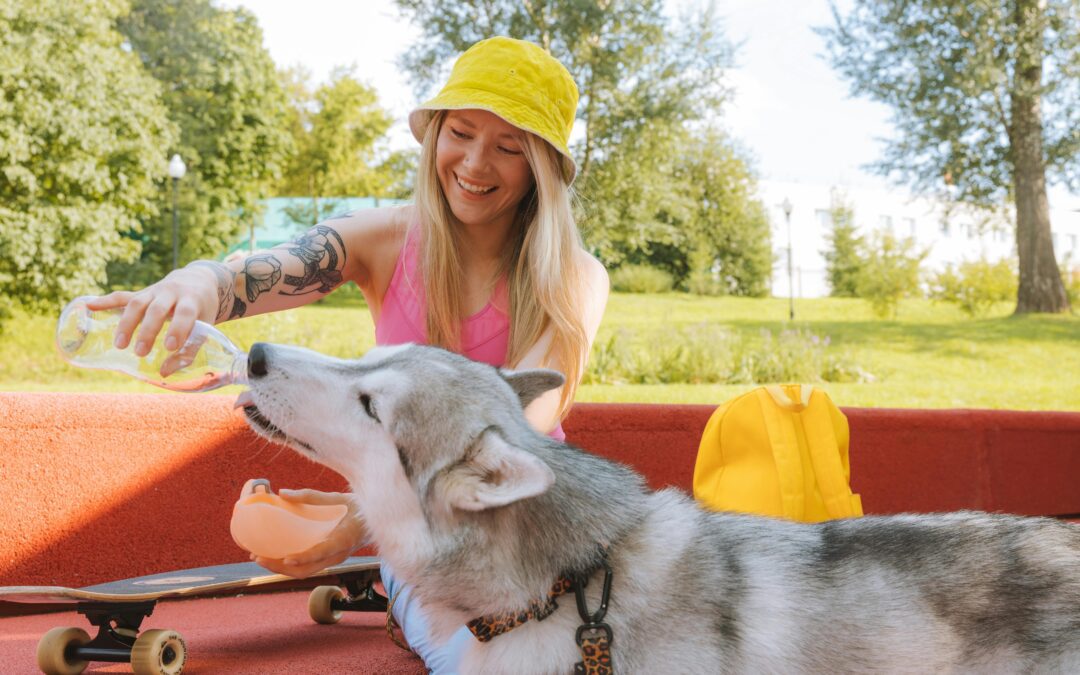Heatstroke is a serious condition that can affect our furry companions as severely as humans. Pet owners and animal caretakers must stay cautious as temperatures rise, particularly during the summer.
Let’s explore the essential aspects of identifying the signs of heatstroke in animals alongside practical strategies for avoidance.
Understanding Heatstroke in Animals
Unlike humans, who can sweat profusely to cool down, animals primarily rely on panting to regulate their body temperature. However, under extreme heat or exertion, breathing becomes insufficient. This can lead to a rapid rise in body temperature, damaging organs and potentially resulting in death.
Early Detection Is Key
Recognizing the early signs of heatstroke can be life-saving. Symptoms to watch for include excessive panting, drooling, lethargy, and coordination problems. As the condition progresses, animals might exhibit signs of gastrointestinal upset, such as vomiting, diarrhea, or collapse. Immediate action is essential to prevent further distress or fatality.
Strategic Prevention Methods
Preventing heatstroke begins with understanding the risk factors. High temperatures, humidity, and limited access to shade or water can create dangerous environments for our animal buddies. Here are some ways you can minimize your beloved friend’s suffering from heatstroke:
Provide Ample Shade and Water
In safeguarding animals from heatstroke, providing environments that offer protection from direct sunlight is essential. These shaded areas enable pets to regulate their body temperature effectively. Concurrently, maintaining a continuous supply of fresh water is important.
Adequate hydration plays a significant role in preventing overheating, as it aids in the cooling process of an animal’s body through panting and perspiration. By implementing these measures, caregivers can reduce the likelihood of animal heat-associated illnesses, promoting a healthier atmosphere during the warmer months.
Limit Outdoor Time in Peak Heat
By scheduling walks, playtime, or any outdoor activities for your pets either early in the morning or later in the evening, you can reduce the potential for heat-related complications. This approach protects your pet from extreme temperatures and provides a more comfortable and enjoyable experience.
Consider Breed and Health
Certain breeds, especially those with thick fur or short snouts, are inherently more susceptible to heatstroke. Bulldogs and pugs, with their compact nasal passages, struggle more with temperature regulation. Similarly, breeds with dense coats may retain more heat. Beyond breed-specific traits, an animal’s health condition plays a significant role in its vulnerability.
Animals with pre-existing health issues, such as obesity or heart disease, face a higher risk of heatstroke due to their compromised ability to cope with high temperatures. Integrating an understanding of these factors into a comprehensive prevention strategy is essential for minimizing the risks during hot weather.
Emergency Response
Upon noticing the initial symptoms, such as rapid breathing or disorientation, immediate cooling measures should be applied. This can involve moving the animal to a shaded or air-conditioned area, applying cool water to their body, and offering small amounts of water to drink. It’s essential to avoid ice or very cold water, as this can cause shock. While these first-aid steps are being taken, it is important to contact a veterinarian urgently. They can provide further instructions and prepare for instant treatment upon the animal’s arrival.
Are you looking to protect your tail-wagging friends from the dangers of heatstroke? Save Them All Pet Transport, passionate about animal welfare, is here to help! Our team offers compassionate, stress-free pet transportation that prioritizes your beloved companion’s comfort and safety throughout their journey. Contact us to learn more about how we can ensure the best care for your pets.

